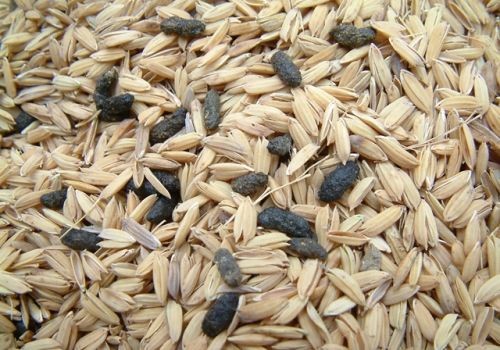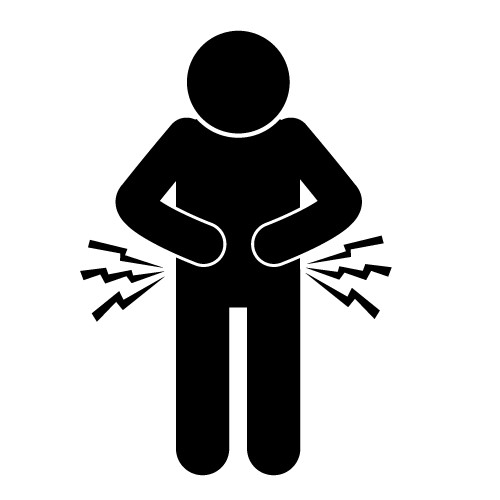Introduction Prevention Salmonella
Did you ever suffer from a Salmonella contamination in your factory or in your raw materials or products? If yes, you will most certainly have experienced that it did not just stay with one occurrence. Salmonella is a strong survivor, even in dry conditions. A lot of dry blending facilities have, sometimes even without knowing it, their own unique pet called Salmonella. Hence it is important to know your raw materials suppliers and contract manufacturers (e.g. blenders) used by your company, as these represent a strong risk for the occurrence of Salmonella in your (finished) products. Find out what you can do for prevention of Salmonella

Especially dry Powders
One of the most difficult product categories for detect Salmonella in are dry powders. This is because usually the Salmonella will not present itself in a homogeneous distribution, but more in clouds interspersed in the entire product stream. Next to this Salmonella is very difficult to kill when it is sitting in dry powders. Depending on the product you might need to get the product heated to temperatures above 150°C for at least 30 minutes to achieve a 6-log reduction if any Salmonella present in the product. The alternative of steam sterilization, which uses a lower temperature and time, is not always possible with dry products. Only microwave treatment might help as a potential solution here. The real difficulty however, is the detection of Salmonella in dry products: for a batch of 1000 kg you need to take at least 60 samples of 25g in order to have approximately 50% chance of detecting any Salmonella present at low levels up to 10% in the product. Needless to say that Salmonella is very often the cause of a product recall. On top of this Salmonella is a strong survivor in dry conditions; it can go into a state of hibernation catalyzed by enzymes to protect the cell structure. Once it comes into contact with water and food it will awake in minutes and start proliferating – which is easy in a dry product environment as there will always be some dust containing nutrients. Add the water to this and usually room temperature and you have ideal circumstances for growth.
Prevention Salmonella
Prevention is of course the only true solution to not have Salmonella contamination in your products. There are five really important areas to be aware of in dry product handling when it comes to Salmonella prevention, below we will discuss each of them.
1. Raw materials and Prevention Salmonella
 Firstly, you must be really aware of your raw materials. Do these represent a risk in terms of being (processed) crops or are these coming from a dry product facility as well? Especially crop related products are prone to Salmonella contamination. On the one hand because of the use of manure during the growing process, but quite often also because of storage conditions after harvesting the crop: pests might have access to the stored crop and contaminate the product with Salmonella through faeces. Also dry powders are a dangerous product category as approximately 50% of the dry powder handling facilities has a(dormant) Salmonella species sheltering in their factory. So if your supplier of dry products does not pay sufficient attention to this it might still end up in your raw materials at very low and difficult to detect levels. For raw materials which are potentially prone to Salmonella contamination, you really should consider a strong pre-sampling scheme before even letting these products onto your site.
Firstly, you must be really aware of your raw materials. Do these represent a risk in terms of being (processed) crops or are these coming from a dry product facility as well? Especially crop related products are prone to Salmonella contamination. On the one hand because of the use of manure during the growing process, but quite often also because of storage conditions after harvesting the crop: pests might have access to the stored crop and contaminate the product with Salmonella through faeces. Also dry powders are a dangerous product category as approximately 50% of the dry powder handling facilities has a(dormant) Salmonella species sheltering in their factory. So if your supplier of dry products does not pay sufficient attention to this it might still end up in your raw materials at very low and difficult to detect levels. For raw materials which are potentially prone to Salmonella contamination, you really should consider a strong pre-sampling scheme before even letting these products onto your site.
2. Pests and Prevention Salmonella
The second cause the address are pests; especially pigeons, rats and mice are a well-known source of Salmonella contamination throughout the food industry. Note that even when pigeons are sitting outside these can still be the cause of Salmonella in your product stream because of the forklift driving through their droppings – hence contaminating large areas of your factory with Salmonella. Also be aware of your factory staff’s boots – this is one of the key reasons why you want to have separate shoes for internal use only.
3. Factory environment
 The third root cause of Salmonella contamination is the direct factory environment. Is your factory located in a rural area (e.g. cows or crop next to the factory)? If so, then you really need to monitor the air filters of your factory (and make sure you always use properly filtered air when handling or being close to open product. You must be aware that manure contains a lot of Salmonella, which can travel through the air to your factory. It might proliferate through your air system, but also be aware of boots again!
The third root cause of Salmonella contamination is the direct factory environment. Is your factory located in a rural area (e.g. cows or crop next to the factory)? If so, then you really need to monitor the air filters of your factory (and make sure you always use properly filtered air when handling or being close to open product. You must be aware that manure contains a lot of Salmonella, which can travel through the air to your factory. It might proliferate through your air system, but also be aware of boots again!
4. Humans and Prevention Salmonella
 People suffering from Salmonellosis often develop diarrhea, fever, vomiting, and abdominal cramps 12 to 72 hours after infection. In most cases, the illness lasts four to seven days, and most people recover without treatment. While a person is actively suffering from Salmonellosis the Salmonella can be easily transferred through bad hand hygiene practices. Hence for the prevention of Salmonella it is important to never let anybody come to work when suffering from diarrhea, fever, vomiting and abdominal cramps as in most cases some kind of microbial bug will be involved that might end up in your food product.
People suffering from Salmonellosis often develop diarrhea, fever, vomiting, and abdominal cramps 12 to 72 hours after infection. In most cases, the illness lasts four to seven days, and most people recover without treatment. While a person is actively suffering from Salmonellosis the Salmonella can be easily transferred through bad hand hygiene practices. Hence for the prevention of Salmonella it is important to never let anybody come to work when suffering from diarrhea, fever, vomiting and abdominal cramps as in most cases some kind of microbial bug will be involved that might end up in your food product.
5. Water
 Although it is not a source, water is crucial factor in the proliferation and sustaining of Salmonella in food factories. Once you get Salmonella into your factory through one of these routes described before, it might survive very well, certainly when from time to time it has a source of water and some nutrients. Hence a dry and clean factory is really important to minimize the risk of Salmonella contamination and proliferation. Best is to use HEPA filtered vacuum cleaners for dry cleaning and only use wet cleaning when really necessary. Even when clean, keep spilling of water and product to a minimum at all times. For prevention of Salmonella design equipment to guide any process water to the drain in an orderly fashion and focus on removal of water and product spillage points anywhere in your production process.
Although it is not a source, water is crucial factor in the proliferation and sustaining of Salmonella in food factories. Once you get Salmonella into your factory through one of these routes described before, it might survive very well, certainly when from time to time it has a source of water and some nutrients. Hence a dry and clean factory is really important to minimize the risk of Salmonella contamination and proliferation. Best is to use HEPA filtered vacuum cleaners for dry cleaning and only use wet cleaning when really necessary. Even when clean, keep spilling of water and product to a minimum at all times. For prevention of Salmonella design equipment to guide any process water to the drain in an orderly fashion and focus on removal of water and product spillage points anywhere in your production process.
Conclusion Prevention Salmonella
Preventing (and fighting) Salmonella is only possible by a comprehensive end-to-end approach in your entire production facility, starting with the raw materials and even factoring in the factory surroundings. True prevention or elimination can only take place if you take all the five factors into consideration at the same time. If you leave room in one of the areas you can be sure the opportunistic nature of Salmonella will prevail.
Additional blogs you might want to read:
Top 5 Root Cause of E. coli Related Recalls in Wheat Flour
Campylobacter – rising star in food borne diseases
Interesting programs of Food Safety Experts:
